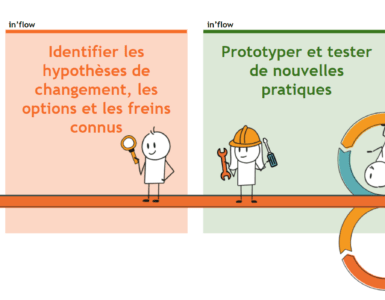PwC published their 18th annual CEO survey and it’s actually a gold mine of key figures on how digital is doing on the current market. This survey covers a wide range of topics going from partnership building trends, diversity, technology, competition market or even business growth tendencies etc. It’s huge in the sense that it gathered 1,322 interviews done exclusively with CEOs in 77 countries, between September and December 2014.
Generally speaking – and please read it if you want more detailed info – let’s say that a great majority of CEOs consider digital technologies as an incredible source of value for their organizations, particularly in terms of data analytics, customer experience and innovation facility. Moreover, CEOs point operational efficiency in the area where they have seen the best return on investment – which is, let’s be honest, excellent news. It means that the majority of them is convinced that digital business transformation can actually reduce costs if it is wisely mastered.
Beyond that general financial statements, CEOs acknowledged that digital has “blurred rigid industry boundaries”.
So far, so good. Convictions on digital transformation is one thing, and it’s a good start! But digital businesses within organizations…how is it exactly working? I mean, business model innovation is quite hard, right. How much of businesses can we “digitalize”? How is it going to evolve?
If you have no idea of what the whole universe means by “digital business”, let’s say that any growing business aligned with an increasing and powerful digital activity, can pretty much be defined as a digital business.
Truth is, everything is possible with digital technology…but, achieving prosperity is different. Ideally, the best scenario would be to have in one hand a satisfied customer and on the other hand the companies’ wallets full with big big money. On that topic, Gartner Inc. reveals in their top predictions for 2015 and beyond, that by 2018, “the total cost of ownership for business operations will be reduced by 30% through smart machines and industrialised services”. How does this work? Simple.
Since digital has made its entry on stage, the whole chain of business operations has been revamped placing innovative activities at the very heart of processes and simplifying as much as it can, customers’ lives.
Since then, business operations are automated, operations are being thought in a more intelligent and smart way with the number one goal of undermining manual interventions and empowering clients’ ability to self-serve.
The urban myth saying that digital business is everyone’s business is actually pretty true. The unleashing power does not only lie in the hands of leaders and CEOs, but it’s the customers themselves who decide to guide business priorities.
Digital empowers business and changes people
If we focus on the challenging part, CEOs have to consider carefully on how to carry out digital business initiatives in their organisations as well as a new approach to managing talent through the nomination of CDOs, market experts (for ex.), also through very flexible team structures and a bunch of amazing “digital & tech champions” highly involved.
It’s a reality that today’s CEOs must change the way they think, act and learn and enrol business in the same process. That also involves a growing Department of Information Systems taking over new responsibilities and no longer reduced to the usual web/intranet related functions, but with real dedicated teams re-considering digital business architectures. Of course, this will be changing depending on the type of your business: retail, manufacturing or industry have an open road in front of them, for example.
What about profitability?
No one wants to invest without some hope for future profitability. Let’s firstly point out obvious environmental benefits like going paperless, which can reduce costs in most of cases: we’ve all seen slogans saying “kill the paper”, “go green”, “sustainability saves money”! Beyond that, there are plenty of easy ways to quantify savings of “going digital”.
Basic case study: the financial sector. Reducing transaction time has tremendously transformed the customer experience and it has been – at the same time – not only a huge cash saving experience for financial organizations, but also a useful way to elevate them, as a superior service provider in the customers’ eyes.
The initial investment might not exactly be the nicest thing happening for your budget, but – hey – watch out the long-term return on investments whole story. It’s always a matter of time!




